Bag Ban II: Pasadena? Culver City? L.A.? [updated]
June 30, 2011

“Less paper, no plastic.” Think of it as the new mantra for Los Angeles County’s checkout lines.
Starting July 1, stores in the county’s unincorporated area will help curb a longstanding environmental problem by charging a dime each for paper bags and halting the distribution of single-use plastic bags altogether. The goal? To wean consumers away from those disposable, ubiquitous—and polluting—grocery bags.
But the historic ban on single-use plastic bags, passed last year by the Board of Supervisors, had a secondary goal—to inspire similar measures in the county’s 88 incorporated municipalities.
The new county ordinance, which will take effect in two phases—the first for large stores, the second in January for smaller retail outlets—will cover an area that is home to more than a million consumers, but its first phase will only affect about 70 supermarkets and other big establishments, most of which are concentrated in northern L.A. County and the San Gabriel Valley.
So as shoppers in places like Athens and Altadena get ready to bring their own bags to market, how’s that domino effect progressing? And what about the county’s biggest concentration of shoppers, the City of Los Angeles?
“We think there’s been great momentum,” says Kirsten James, water quality director for the Santa Monica-based Heal the Bay, which advocated the bag ban. “Since the county moved forward, we saw the City of Calabasas adopt the same ordinance, which also goes into effect in July.
“We also saw the City of Santa Monica adopt a pretty similar ordinance that will go into effect in September. We also saw Long Beach adopt the same ordinance, with a couple of slight modifications. They start in August, so they’ll be on board soon as well.”
The City of Malibu passed the county’s first ban on single-use plastic bags in 2008. A Manhattan Beach ban the same year was challenged in court by a pro-plastic bag group because the city did not conduct a formal environmental impact report before determining that fewer plastic bags would be good for the environment.
Such reports, which document the effects a proposed law will have on the environment and community, can be costly and time consuming, but are required by the California Environmental Quality Act, the ban’s opponents noted. The Los Angeles County ordinance, which has not been challenged so far, not only included an EIR, but drafted it so that cities within the county could simply build on the county’s environmental analysis with individual addenda, as opposed to starting from scratch, which would be much more expensive. The Manhattan Beach appeal is now before the California Supreme Court, and a ruling is expected by mid-August.
“Meanwhile, other cities are pondering the idea,” James says, and at least two expect to see local ordinances before their city councils as early as July.
- West Hollywood’s City Council, for instance, voted in February to begin compiling EIR data for a draft plastic bag ordinance, and the city’s climate action plan indicated in April that the city is monitoring the Manhattan Beach litigation for guidance on how best to proceed. “The City Council has twice supported efforts to ban single-use plastic bags from use in the City of West Hollywood,” notes Councilmember Abbe Land, who co-authored both items. “We are continuing to move forward with our efforts to create an effective ordinance, working with our City Attorney and our Community Development Department to ensure we are compliant with EIR requirements.”
- In Pasadena, the city’s Environmental Advisory Commission has been gathering public comment on a proposed ban for nearly two months. Ursula Schmidt, sustainability affairs manager for the city, says the ordinance under consideration is modeled on the county’s and has received three letters of opposition and more than 200 letters of support. Though the local Chamber of Commerce expressed concern about local stores being placed at a competitive disadvantage if Pasadena businesses have to charge for paper bags and adjacent communities don’t impose such a ban on their stores, she says, the Chamber’s board voted not to take an official position, and several nearby cities, including Glendale and South Pasadena, have contacted her for information about Pasadena’s proposed measure. The commission is expected to vote as soon as July 19 on a recommendation, which would go to the City Council in September, she says.
- In Culver City, Vice Mayor D. Scott Malsin says public support for a ban has been building for some time now, and the city attorney has been working on a draft ordinance to bring to the City Council “within the next month.” It, too, is modeled on the county’s ban, and builds on the county’s EIR data. “We’ve really appreciated the county’s leadership on this,” says Malsin. “Had Culver City not been able to use the county’s EIR data, we probably would not have been able to move forward with it at this time.”
- Inglewood also is drafting a proposed plastic bag ban for consideration later this summer, based on the county ordinance, with an addendum to the EIR, city staffers confirm.
- The City of Los Angeles, meanwhile, is the big player on the landscape. One city report estimated that consumers in just the city use 2.3 billion single-use plastic bags annually. Karen Coca, division manager for citywide recycling with the city’s Bureau of Sanitation, says a staff analysis on a proposed ban is being finalized and a report detailing policy options is expected to go to the City Council some time in July.
In some respects, the city’s strategy has already been decided. The City Council agreed in 2008 to ban single-use plastic bags by 2010 unless the state addressed the issue. The California Legislature rejected a statewide ban last year amid a $2 million-plus industry lobbying campaign.
Coca says that, aside from the pending legal questions surrounding the Manhattan Beach case, the city’s main challenge appears to be enforcement. Los Angeles has some 7,500 retail outlets that would be impacted by an ordinance like the county’s, more than seven times the number of stores that will be affected in unincorporated Los Angeles County when the county ordinance is fully implemented in 2012.
Pat Proano, the county Department of Public Works’ assistant deputy director for the environmental programs division, says the county Department of Health and the Agricultural Commissioner will enforce the county ordinance, since they already conduct regular inspections of supermarkets and other retail stores.
However, he says, “there’s a cost associated with that,” and it’s unclear whether the county would have the resources to enforce bans for other municipalities. In any case, Proano adds, ”this is a milestone for L.A. County and we are ready for implementation of the plastic bag ban.”
Posted 6/23/11
Updated 7/14/11: The California Supreme Court on Thursday made it even easier for municipalities to join in Los Angeles County’s new plastic bag ban, ruling that they can clamp down on the proliferation of single-use plastic grocery bags without necessarily going through lengthy and expensive environmental impact reports.
The unanimous court decision, in a lawsuit brought by a pro-plastics organization after Manhattan Beach tried to ban plastic bags in 2008, had been closely watched by cities, including the City of Los Angeles, after an attempted statewide ban went down to legislative defeat amid heavy lobbying from the chemical industry last year.
Environmental groups rejoiced. “This basically opens the flood gates,” says Kirsten James, water quality director for Santa Monica-based Heal the Bay. “This is a hugely significant ruling and it opens the door for cities to move forward all over the state.”
Robber hits beach parking lots
June 30, 2011
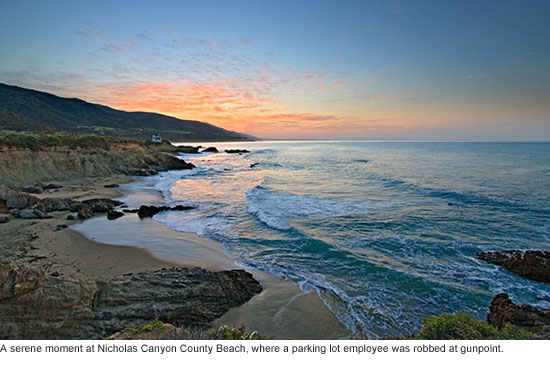 Los Angeles County officials are demanding new safety measures following back-to-back armed robberies this month of privately-contracted beach parking lot employees—crimes their company suspects may have been orchestrated by insiders.
Los Angeles County officials are demanding new safety measures following back-to-back armed robberies this month of privately-contracted beach parking lot employees—crimes their company suspects may have been orchestrated by insiders.
In all, more than $8,000 reportedly was stolen from employees of Parking Concepts, Inc., which has a contract with the county to manage its beachfront parking lots. No one was hurt in the separate incidents.
The first robbery occurred shortly after 9 p.m. on Wednesday, June 9, while a supervisor was dropping off money at the company’s Marina del Rey office. As he climbed the steps to open a security gate, a gunman emerged and ordered him to the ground, the company said in an e-mail to the county’s Department of Beaches and Harbors. The suspect fled with about $1,500.
The second crime took place 11 days later, on a Sunday at around 8 .pm. in the deserted lot of Nicholas Canyon County Beach, just south of the Ventura County line. Two Parking Concepts employees, one of them a supervisor, were there to lock the entrance for the night when a man in a ski mask confronted them with a handgun. He demanded money they’d collected earlier at lots along 27 miles of coastline–$6,300 stashed in the trunk of their company car. The suspect fled in a white Nissan sedan.
No arrests have been made in the unusual thefts, both of which are being investigated by the Los Angeles County Sheriff’s Department.
Vivian Sanner, who oversees parking operations for the Department of Beaches and Harbors, says an executive with Parking Concepts told her that they believe the same man was responsible for both crimes and that he was familiar with the company’s collection patterns, including the fact that Nicholas Canyon was the final stop.
“They think it’s an inside job,” Sanner said. The company did not return calls for comment.
Under their contract, Parking Concepts is responsible for refunding the stolen money to the county, which has directed the company to come up with measures to help avoid a reoccurrence, including the possible use of armored vehicles.
“We’ve asked for a plan that would not only protect our revenue but that, more importantly, would protect the safety of the employees,” said Kerry Silverstrom, chief deputy of beaches and harbors.
In an e-mail last week, Parking Concepts outlined some of its initial steps, which include: hiring armed guards to be present at the beach parking office during peak times; bringing aboard a security consultant to analyze the lot operation, and outfitting company vehicles with “drop safes” for money.
Posted 6/30
The hills have eyes
June 30, 2011
They’ll be watching the fireworks, but not like the rest of us. For them, it’s personal, a call to duty.
On this Fourth of July, the volunteers of Arson Watch once again will be positioning themselves throughout 185 square miles of the Santa Monica Mountains, keeping an eye out for illegal fireworks and holiday revelers who could spark fires in the tinder-dry hills.
“We don’t want a great family holiday to turn into an out-of-control, raging nightmare,” says Sharon Donaldson, public information for the group, which works hand-in-hand with the Los Angeles County Sheriff’s Department.
Like others in the group, Donaldson says that she and her husband joined Arson Watch after a brush with flames themselves. In their case, the “Old Topanga Fire” of 1993 blazed dangerously close to their home while they were vacationing in Hawaii. They watched the whole thing unfold on CNN.
“It was the worst feeling in the world. It was horrifying,” she says. “You’re feeling totally helpless, watching your neighbors’ houses in flames.”
The group was founded in 1982 by the late actor Buddy Ebsen after the “Dayton Canyon Fire” torched his neighbors’ homes and gravely threatened his family and ranch. When he learned that the inferno was arson, he sprung into action. Along with his daughter Cathy, he aggressively recruited his neighbors to help local authorities prevent future fires, forming the original nucleus of Arson Watch.
Today, Arson Watch is staffed by 112 volunteers who log 2,500 to 4,000 hours per year. They assist the Sheriff’s Department at the Lost Hills/Malibu station by patrolling, talking to the public and serving as witnesses. They represent an early warning system in case of an actual fire, notifying fire officials who can try to contain it.
“We are the eyes and the ears of the Santa Monica Mountains when there is fire weather,” says Donaldson, who adds that their presence alone can serve as a deterrent.
While there’s no way to definitely gauge the deterrence effect of Arson Watch, its members note that there has been only one major fire started in the Topanga/Malibu area since the group was launched—the fatal blaze that raced through Donaldson’s neighborhood.
Independence Day, with so many people in party mode, poses some unique and tricky challenges for the volunteers.
For example, on one recent July 4th, an Arson Watch volunteer was alone in remote Tuna Canyon, walking on a fire road where the public is not permitted. There, winds can quickly whip a spark into a wall of flame. The volunteer was soon overwhelmed by a crowd of young people clambering up a bluff to throw an impromptu “rave,” says Donaldson.
She remembers hearing his concerned voice over their two-way radios. Hundreds of partiers were upon him, carrying fireworks and smoking. Refusing his pleas to leave, he enlisted help from the sheriffs, who broke up the dangerous celebration.
According to data from the National Fire Prevention Association, illegal fireworks caused an estimated 18,000 reported fires in 2009, including 1,300 structure fires, 400 vehicle fires and 16,300 “outdoor and other” fires. In all, they caused a reported $38 million in property damage and 30 reported injuries.
The risk is especially high in wildfire-prone regions, such as the Santa Monica and San Gabriel mountains. The California Department of Forestry and Fire Protection has already recorded 33 major wildfires in 2011. About two weeks ago, Governor Jerry Brown issued an executive order devoting more resources to fighting and preventing the fires.
This 4th, remember that all fireworks are illegal in L.A. City, unincorporated parts of L.A. County, and in other cities including Pasadena and Long Beach. A few cities such as Gardena and Alhambra permit “safe-and-sane” fireworks–but there are restrictions on who, where, and when they can be used.
The penalties for illegal fireworks can be severe. Small amounts are confiscated and may incur fines, says Sergeant Mark Bock of L.A. County Sheriff’s Malibu/Lost Hills Station. However, aerial fireworks and others like M-80s are considered explosives, and can bring felony charges. If the fireworks injure or kill anyone, perpetrators can be charged with serious felonies like mayhem, manslaughter, or even murder.
Donaldson recommends leaving fireworks to the pros, and suggests contacting law enforcement if you see people lighting them.
“It’s illegal, number one, and it’s not worth it,” she said. “There are amazing fireworks shows everywhere; you can go see these professional shows and not put lives at risk.”
She and her fellow Arson Watchers will be in the mountains this weekend to make sure people heed that advice.
Posted 6/30/11
Celebrate the USA the Third District way
June 30, 2011
Budget concerns may have forced L.A. County’s Department of Beaches and Harbors to scrap their annual fireworks display in Marina Del Rey, but that doesn’t mean you’re out of luck this Fourth of July. Plenty of pyrotechnical celebrations will be shimmering throughout the county. Here are some of the festivities planned in the Third District:
Studio City
For one day, the fireworks will outshine the stars in Studio City, as it celebrates the 4th with “Let Freedom Ring,” a music, food and fireworks festival at CBS Studios.
A 70’s disco cover band and comedy act, Boogie Knights, headlines the night’s entertainment. There will also be a car show from the Television Motion Picture Car Club, a model airplane show, dancers and a hand bell choir. You can dine on the BBQ sold there or bring your own food.
The event takes place at CBS Studio Center, 4024 Radford Avenue, on July 4 from 5 p.m. to 9 p.m. Tickets are $20 for adults, $10 for kids ages 6 to 12, and free for kids 5 and under. VIP tickets are also available and include an assortment of additional luxuries like a gourmet dinner on an air-conditioned soundstage and rooftop fireworks viewing.
All tickets include free parking and may be purchased online, by calling (818) 655-5916, or in person at the Studio City Farmer’s Market this Sunday from 8 a.m. to 1 p.m.
Hollywood
Darryl Hall & John Oates and the Hollywood Bowl Orchestra will provide a musical backdrop for the Hollywood Bowl’s annual fireworks gala. Hall & Oates’ rock and pop songs were virtually unavoidable if you turned on the radio in the late 70s and early-to-mid 80s. “Rich Girl” and “Maneater” are just two of their five No. 1 Billboard Top 40 hits. If that’s not enough to satisfy your inner patriot, the Bowl Orchestra will play old-fashioned American classics.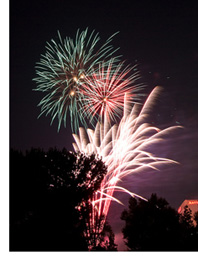
Tickets start at $12 and may be purchased online from Ticketmaster or by calling (323) 850-2000. Details on getting to the Bowl are available on its website. Parking starts at $15 and is limited, so you may want to take advantage of the park-and-ride.
Santa Monica
Santa Monica’s annual parade is themed “4th of July at the Beach” to honor the L.A. County Fire Department Lifeguards who keep it safe.
Local groups will float and march down Main Street from the Santa Monica Civic Center to the border of Venice. The parade is sponsored by the California Heritage Museum and Ocean Park Association. Afterward, the celebration continues at Heritage Square with live music and dancing, food trucks and a picnic on the lawn. It all starts at 9:30 a.m., so there will be plenty of time for other revelry later in the day.
Pacific Palisades
The Pacific Palisades 4th of July parade goes back 63 years and has been led by such notables as Chevy Chase and Martin Short. This year’s grand marshal is actor Jeffrey Tambor. Honorary Mayor Sugar Ray Leonard joins him to preside over the parade. One Palisadian, Sarah Kelley, has so many fond memories of this event and its characters that she is filming it for a documentary.
Skydivers start the fun at 1:50 p.m. and the parade gets moving at 2 p.m. More than a thousand marchers will take the streets. Parade route and details are available online.
After the parade, at 6 p.m., a concert and fireworks display will commence at Palisades Charter High School. Reggae artists Rocky Duwani and Band headline the music menu, and the fireworks start at 9 p.m. Admission is $2, with proceeds going to the Palisades Charter H.S. Music Department.
Woodland Hills
Not to be outdone, Woodland Hills boasts the biggest fireworks display in the valley, and claims the highest attendance, too–50,000.
Dennis P. Zine’s July 4th Extravaganza will have a 20 minute fireworks display and live patriotic music from Los Angeles Pierce Symphonic Winds and others. Twenty local restaurants will be on hand.
The event, produced by Valley Cultural Center and sponsored by L.A. City Councilmember Zine, begins at 6 p.m. July 4 (the fireworks are at 9:05). It takes place in Warner Park and is free to the public.
Sunland-Tujunga
Sunland-Tujunga’s celebration is full of summer fun for families. Starting at 4 p.m., there will be a hula hoop contest, water slides, moon bounces, water balloon fights, live music and plenty of food. Fireworks start at 7 p.m.
The event is sponsored by the Sunland-Tujunga Neighborhood Council, and it takes place at Verdugo Hills High School, 10625 Plainview Avenue on July 4. Entry is $5.
Calabasas
Calabasas has a little something for everyone this Independence Day, beginning at the Calabasas Tennis & Swim Center, 23400 Park Sorrento.
Get a healthy start with the Lakeside Fun Run at 7:45 a.m. Choose a 4-mile run, 2-mile run or 2-mile walk. Kids can participate in a ¼-mile race. At 10:30 a.m., a pet show will be held for all your furry and scaly friends. Don’t worry if your mutt or hound (or even your lizard) is not up to pedigree–all pets are welcome. Sign up for the run or pet show by calling (818) 222-2784.
If you’re feeling the heat after your run, cool off at the Summer Splash Party from 11 a.m. to 5:30 p.m. There will be swimming, water games, tennis, barbecue, dancing and a DJ.
Finally, head over to Calabasas High School for the City of Calabasas’ annual 4th of July Fireworks Spectacular. Starting at 5 p.m. you can enjoy live soul and Motown tunes, rides, crafts, balloon artists and games for the family–all followed by the fireworks at 9 p.m. Tickets must be purchased in advance from City Hall, the Tennis & Swim Center, or Juan Bautista De Anza Park for $11 (kids under 2 are free).
Malibu
Like your fireworks served over the largest body of water on the planet? Consider heading to Malibu, where you can see the sun set over the Pacific before explosions light the night sky. While Malibu has no official fireworks display, they permit some private displays. This year there are four of them:
- 9:00 pm – launch from barge offshore of Malibu Colony
- 9:00 pm – launch from barge offshore of 21500 block of PCH
- 9:00 pm – launch from barge offshore of 22300 block of PCH
- 9:00 pm – launch from barge offshore of 27900 block of PCH
Posted 6/30
Some Franklin Canyon adventures
June 29, 2011
If you’re planning a close-to-home “staycation” this holiday weekend, Franklin Canyon’s nature programs offer a variety of adventures for adults and kids.
Starting Saturday, July 2, at 10 a.m., Franklin’s Movie Magic casts its spell as visitors learn about the site’s rich history as a filming location for movies and TV shows, including such enduring favorites as the Andy Griffith Show and Star Trek. It’s an easy, two-hour walk “on location.”
If learning about earthquakes is more your thing, there’s also a two-hour program called Franklin’s Faults, starting at 11 a.m. Saturday. Learn how the faults created the canyon, and pick up some tips on quake preparedness, too. Then on Sunday, July 3, at 9 a.m., join the Nature Trek for a bracing two-hour hike exploring the canyon up and down. This one’s rated moderately difficult, so be prepared and be sure to bring water.
Finally, at 10 a.m. Sunday, a volunteer naturalist will lead the kids on a stroll through Franklin Canyon and help them construct their own nature art project. It’s geared to children ages 3-8, accompanied by a parent.
All programs begin at the Sooky Goldman Nature Center.
The programs are brought to you through a partnership among the National Park Service, the Santa Monica Mountains Conservancy and its sister agency, the Mountains Recreation and Conservation Authority.
Franklin Canyon is located at 2600 Franklin Canyon Drive in Beverly Hills. Both the programs themselves and the parking are free, but leave your dogs at home. For more information, call (310) 858-7272 x131. And be sure to check out these hiking and safety tips before you set out.
Posted 6/29/11
A night, and more, at the museum
June 29, 2011
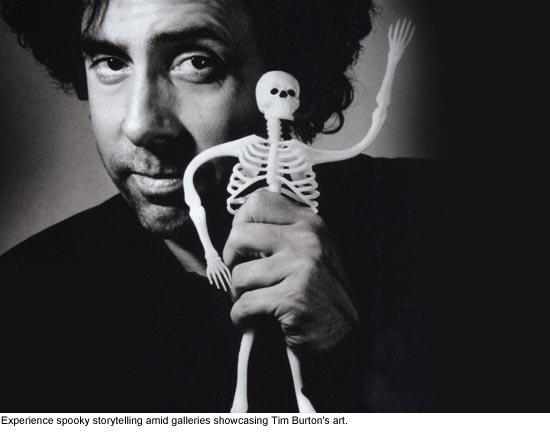
No Ben Stiller. No rampaging dinosaur skeletons. No Egyptian curses.
Better.
Starting Friday, you can experience not one, but five nights at the museum—the Los Angeles County Museum of Art, that is. Families can gather ‘round the flashlight every Friday evening at 7 p.m. throughout the month of July for some spooky but safely kid-friendly nighttime storytelling, set amid the galleries currently featuring the sculpture and artwork of filmmaker Tim Burton.
The fun begins this week on Friday, July 1, with the program “Tales with a Twist,” featuring storyteller Karen Golden sharing creation myths and other mysteries of nature.
Upcoming events will take you traveling with ghosts and offer tales of spiders, bears and other creepy critters. Here is the complete list of programs.
The Tim Burton exhibit is located on the ground floor of BCAM, LACMA’s big red gallery. Tickets are included with general admission, but they’ll only be available an hour before the event, and seating is limited.
Here’s everything you need to plan your visit.
Posted 6/29/11
Bollywood moves at the Music Center
June 29, 2011
Bollywood dancing is all the rage these days, and not just at the movies. On Friday, July 1, at the Los Angeles County Music Center you can add some new moves to your dance floor repertoire.
Active Arts at the Music Center presents “Dance Downtown,” a series in which anyone can learn new styles of dance from across the globe. The latest is “Bollywood/Bhangra,” a choreographed style that fuses traditional Indian folk dances with Western techniques. There will be live music, a DJ, and beginning dance lessons throughout the evening under the stars in downtown L.A.
The free event takes place from 6:30 p.m. to 10 p.m. at the Music Center Plaza, 135 North Grand Avenue. It’s just a short dance from the Metro Red Line’s Civic Center station.
Posted 6/29/11
From tragedy to child’s play
June 29, 2011
Tweaking the Bard with reimagined offerings such as “Hamlet, Prince of Puddles,” L’Enfant Terrible
has adapted Shakespeare’s tragedies into live comedies suitable for all ages. This weekend they hit the stage at the Bootleg Theatre for the “Fun Family Festival of Tragedy.”
The adaptations are the brainchild of playwright Angela Berliner and director Justin Zsebe of L’Enfant Terrible, an organization that seeks to make enjoyable and affordable theatre for all ages.
On Saturday, July 2, “Hamlet, Prince of Puddles” will be performed at noon, and “MacBeth and the Monster” makes its world debut at 2 p.m. On Sunday, July 3, “Titus the Clownicus” begins at noon and “King O’Leary” at 2 p.m. A full schedule of July shows is available online.
In addition to the plays, other family activities are included in the festival. Audiences can meet the cast or take backstage tours. These extras are included with the price of admission, which is $17 per show for adults and $10 for students. Discounts for multiple shows and groups over 6 are also available. Wear pajamas for the Saturday morning performance and you will get $2 off. Visit the website for full ticketing info.
The Bootleg Theatre is a converted 1930s warehouse located at 2220 Beverly Boulevard. Plan your trip there with Metro.
Posted 6/29/11
Lights, camera…fee increase
June 28, 2011
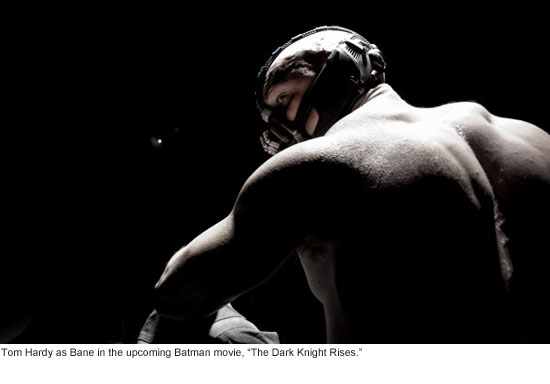 The Dark Knight can look on the bright side.
The Dark Knight can look on the bright side.
Producers of the next “Batman” movie, now planning a 14-day film shoot in Los Angeles County flood control channels, will be paying $300 a day for the privilege—not the $798 daily rate set Tuesday as part of a new inspection fee structure approved by the Board of Supervisors.
Projects such as “Batman” got in under the wire by applying to film before the board action, and will be charged the old rate, said Maryam Adhami, a senior civil engineer who handles permits for the county Department of Public Works.
The fee hikes for filming in flood control channels and on county roads are intended to help Public Works recover its inspection costs. They come after supervisors in April approved a package of other Public Works fee increases—including for permit issuance and processing—that apply to entertainment industry production companies as well as other kinds of firms.
The Public Works department is not alone in seeking to offset its costs. New county Fire Department filming fees also have been enacted. And those are in addition to “use fees” charged for filming in locations such as county beaches and parks, and for applying for a permit from FilmL.A., the private, nonprofit agency that coordinates filming for the city and county of Los Angeles. (This March, 2011, report gives an overview of the various location fees charged by the county.)
“The biggest problem we see is that there seems to be a tremendous increase in fees at a time that we’re struggling to keep filming in Los Angeles,” said Ed Duffy, business agent for Teamsters Local 399, which represents location managers. While a $798 inspection fee for the first day of shooting in a flood control channel may indeed be justified, Duffy said, there seems to be less basis for charging the same rate for additional shooting days on the same project.
Filming permits for the county’s flood control channels—immortalized in films such as the “Terminator” series and “The Italian Job”—were issued 22 times during fiscal 2010-2011, while county road filming permits were granted 549 times, according to a Public Works review. The department collected a total of $194,931 for both kinds of shoots—but its costs were $409,225. Had the new fee structure been in place, it would have received a total $410,337.
Inspection fees for filming in county flood control channels have not increased since they first were enacted in 1982, Public Works Director Gail Farber said in a letter to the board. Inspection fees for county roads had a “moderate increase” in 1998, and have been adjusted according to the consumer price index since that, she said. The board’s action Tuesday increased both kinds of fees.
Dennis Hunter, deputy director of Public Works, told supervisors that some in the industry are concerned that the department is charging separate permit fees for filming in multiple locations. Hunter said that the newly-enacted fees will be monitored for six months to make sure that the department is just covering its costs—not turning a profit at the production companies’ expense.
Overall, filming activity is down in the county, although it is too soon to say whether that is due to recent fee increases, said Donna Washington, FilmL.A.’s vice president for operations. She said a fee hike from $300 to nearly $800 a day to shoot in a flood control channel could prompt a production company to look elsewhere.
“They’d probably try to find somewhere else to shoot,” Washington said.
Still, she said that she understands that county departments are facing financial pressures of their own.
“The perception is that the county is being anti-filming. I don’t think that’s the case. The departments have all been told to do cost recovery.”
Posted 6/28/11




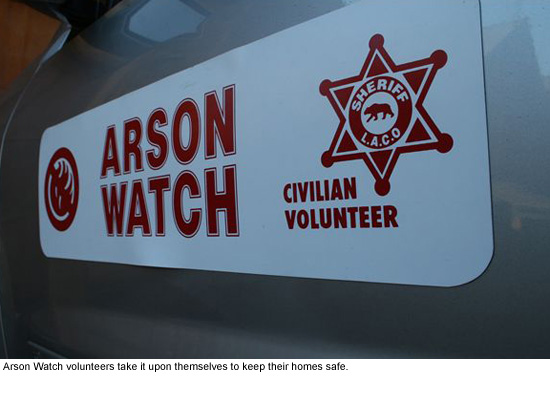


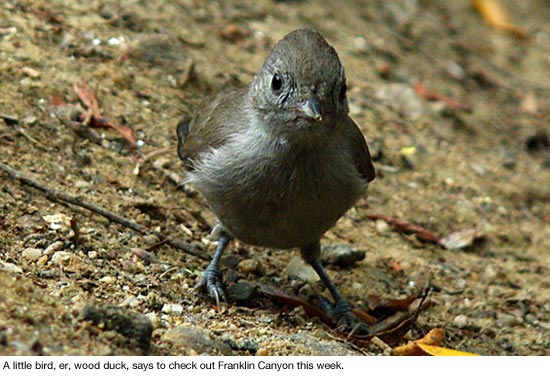
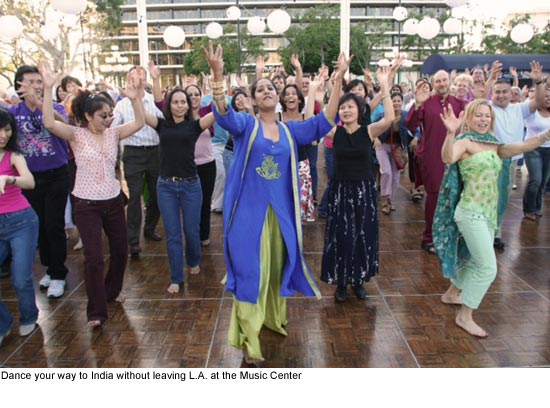
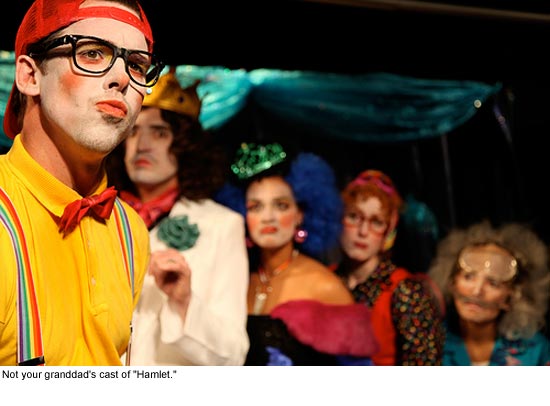





 Check for the latest closure information
Check for the latest closure information








